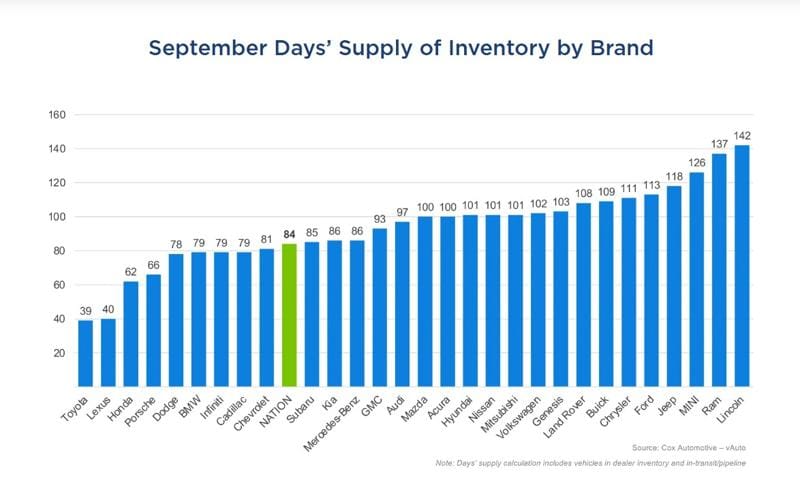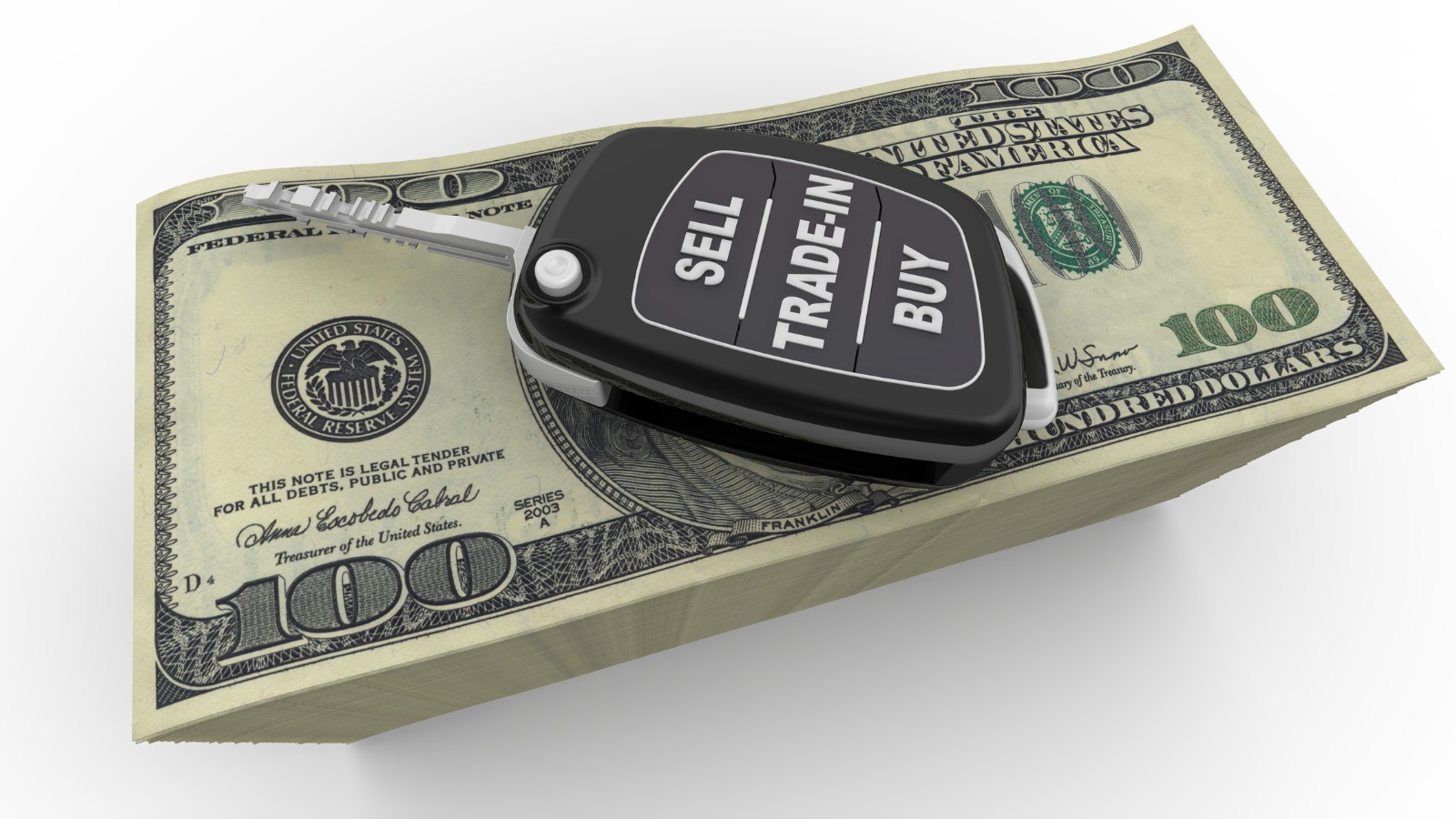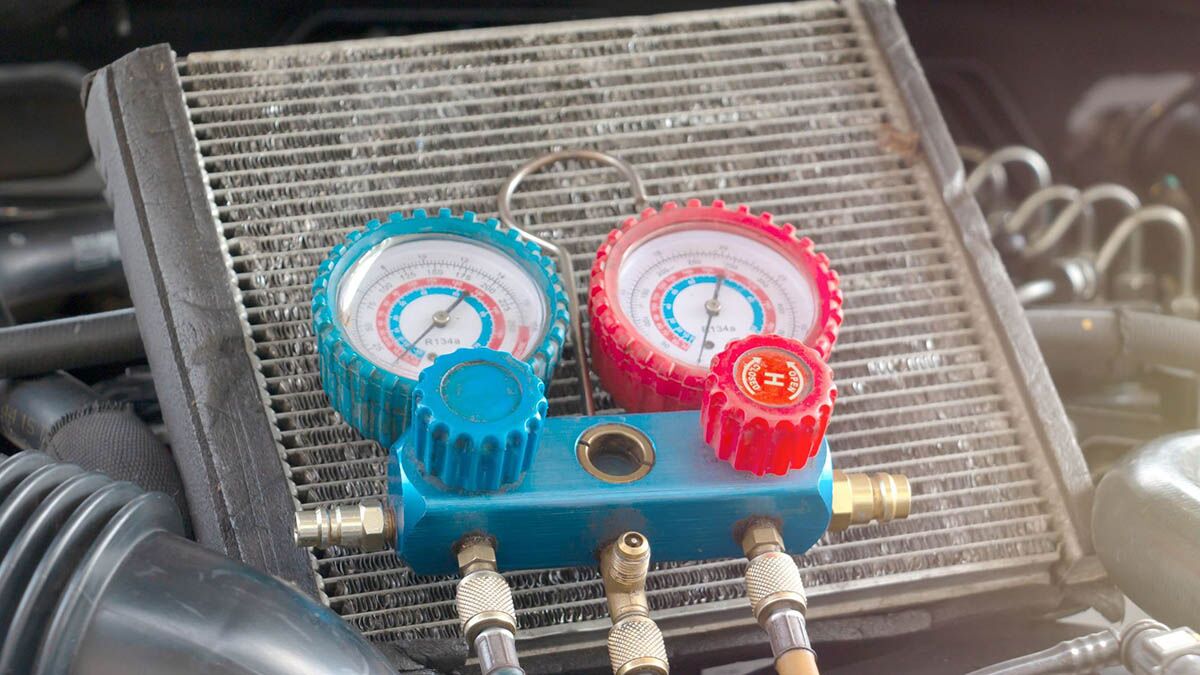Quick Facts About the Buying and Selling Marketplace
- The final sale price of the average new car crossed the $50,000 mark for the first time in September, but it’s likely to fall in October.
- Used car prices rose modestly last month.
- The credit market shows signs of slight tightening.
The average new car sold for more than $50,000 in September — the first time Americans had seen that figure. It was likely a blip, not a sign of things to come. Weird circumstances made September exceptional.
But if longer-term patterns hold, we’ll cross the $50K barrier for good sometime next year. Fall will be a nerve-wracking time to go car shopping. It’s still possible to find a good deal. However, it will take some research, as broader economic trends suggest rising prices and a tightening credit market that will test car shoppers.
Knowing what you’re up against is more important than ever this season.
We’ll explain what to expect when buying a new or used car, or selling or trading one in, and why it might make sense to act quickly.
- What New Car Shoppers Can Expect
- Each Automaker Is Responding Differently
- What Used Car Shoppers Can Expect
- Older, Less Expensive Cars Harder to Find
- Automakers Are Building More Expensive Cars
- How to Buy a Car Right Now
- Selling a Car Right Now
- Trading in a Car Right Now
- Looking Ahead
- Tips for Buying a Vehicle Right Now
What New Car Shoppers Can Expect

The average new car buyer paid $50,080 in September — the highest figure on record and the first time America has crossed the $50,000 line.
Part of the increase was normal. New car prices always increase in the fall as cars from the next model year start rolling into dealerships.
Some was abnormal, caused by factors that will be with us for a while. New auto industry tariffs started in April, but automakers held off on passing the costs on to car shoppers at first, hoping the tariffs wouldn’t last. Now that the ink is drying on long-term trade deals locking in the levies, automakers have begun warning that they cannot absorb the cost themselves for much longer.
Meanwhile, another portion of the increase was caused by a one-time factor that has already disappeared.
September also saw a rush of new electric vehicle (EV) buyers, as Americans hurried to claim a $7,500 federal EV tax credit before it expired at the end of the month. EV prices remain higher than prices for gasoline-powered cars. The average EV sold for $58,124 last month, pulling the average up.
It will likely fall again in October, as EV sales will fall without the incentive’s support.
Of course, you’re not likely to pay the average sale price. Supply and demand govern car prices, and each brand has a unique supply situation.
RELATED: When Will New Car Prices Drop?

Dealers typically aim to keep about a 60-day supply of new cars on sales lots, with another 15 days on order. This fall, some are well below that target and unlikely to offer heavy discounts. Others have a surplus and are looking to make deals. Shopping outside your preferred brands could save you thousands.
Each Automaker Is Responding Differently
Car pricing is complicated, and each automaker has responded to tariffs differently. As long as the tariffs remain, the response will likely shift constantly.
Some, like Hyundai and Mercedes-Benz, pledged not to raise prices at first, though increases are trickling in with the model-year change. Others are deciding on a case-by-case basis.
RELATED: How Each Automaker Is Responding to Tariffs
Automakers have absorbed some of the cost of tariffs for a while. They might even respond by raising the price of one car to help pay the tariff on another.
With so much constantly shifting, your best tool for understanding local price changes is the Kelley Blue Book Fair Purchase Price, which we calculate using recent transactions for that car in your area. We update each Fair Purchase Price weekly, showing you how tariffs and tariff anxiety are impacting the prices of the specific vehicles you’re shopping for where you live.
Loan Conditions Are Worsening, but The Fed Has Begun Cutting Interest Rates
Prices are all that cash buyers need to worry about. However, few car shoppers are cash buyers. Most Americans borrow money to buy a new car.
After a summer of relatively easy credit, buyers began tightening their lending standards in August. Conditions are still relatively good for those borrowing money to buy a car. But there is new uncertainty in the process.
The Federal Reserve, commonly called “the Fed,” sets the federal funds rate, the interest rate banks use when they lend each other money. The federal funds rate determines interest rates for every type of loan, including car loans. It’s still on the way down, which should ripple through the economy over the next few months.
The Fed cut rates in September — its first cut in 2025 — and suggested that it will make two more cuts in the coming months. That could help loosen lending standards slightly.
Lenders are also newly shaken by the recent collapse of a prominent subprime auto lender. Bring patience to the loan application process this fall. It’s likely to be a little harder than it has been.
What Used Car Shoppers Can Expect

Used car prices are also on the rise, but they are rising more slowly than new car prices. The average used car sold for $25,825 in September. That’s just 2% higher than a year ago.
Supply and demand govern used car prices, and supply is trending in a positive direction. Dealers ended the month with 10% more cars on the lot than they had last September.
That’s great news for shoppers, because the nationwide supply of used cars has been thin for years. Pandemic-era disruptions meant automakers built about 8 million fewer cars than they normally would have in 2021 and 2022. Millions of cars will never reach the used market, keeping supplies low for a long time.
The best predictor of used car prices is the wholesale prices dealers pay for used cars at auction. Those have held relatively steady in recent weeks, suggesting that used car shoppers might see a little predictability in the fall.
Older, Less Expensive Cars Harder to Find
If you hope to find an older vehicle and your budget is less than $15,000, these cars remain in short supply. Dealers have just 34 days’ worth of used cars priced under $15,000 — 14 days below the overall industry average.
However, the tariff threat could push used car prices higher. When new car prices rise, would-be new car shoppers head to used lots looking for something still in their price range. More would-be new car shoppers start buying up the available used vehicles, drawing down the inventory. Plus, Americans are holding onto their cars longer than ever. The average vehicle on American roads is 12.8 years old. Automakers also produced fewer cars for several years after the 2008 recession, leaving fewer higher-mileage, older used vehicles available to sell.
The most accessible used cars carry prices between $15,000 and $30,000.
Automakers Build More Expensive Cars
If you haven’t been car shopping in a while, the cars on offer may surprise you.
In recent years, inexpensive cars have grown scarce. Recent analysis finds that sales of vehicles priced at $25,000 or less have fallen by 78% in just five years. Six years ago, automakers offered 36 new models in that price range. By late 2023, that number was just 10. Automakers have announced plans to cancel most of those 10, including the low-cost Mitsubishi Mirage that was axed after 2024.
Meanwhile, cars priced at $60,000 or higher have grown by 163% during the same period.
Dealers are pushing back, telling automakers they need more mainstream cars to sell, but correcting the problem will take time.
How to Buy a Car Right Now

New car prices remain about $10,000 higher than five years ago, amid the COVID-19 pandemic. That’s when the average transaction price for new vehicles was around $38,563. However, with all the technological advances and offerings, your next car will likely last longer and help you drive safer than ever.
RELATED: Buying Older, Used Cars in 2025
Vehicle quality studies repeatedly show that today’s new cars suffer fewer problems than those from just a few years earlier. Buyers of higher-priced used cars will likely see the vehicle driving on the road even longer. The same goes for those buying new ones.
With most automakers now building such durable cars, they compete by adding more high-tech features. Features like adaptive cruise control and Apple CarPlay are now more common than ever on entry-level vehicles. Read on to see our tips on buying a car below.
How to Leverage Incentives to Buy a New Car
Last month, car incentives comprised about 7.2% of the average deal, or about $3,534. To learn how to take advantage of incentives, read about our monthly best car deals to find dealer or manufacturer offers, including cash back and lower interest rates for financing your next vehicle.
RELATED: How to Buy a New Car in 10 Steps
Selling a Car Right Now
Few of us can sell a car without needing to buy a replacement. If you can sell now, what are you waiting for? You could get more for your vehicle if it’s in high demand, and that’s excellent news. The best way to get the most money for your used car is to sell it privately. But if you don’t want the hassle, there is still an opportunity to sell to a dealership.
PRO TIP: If selling a car, consider selling it peer-to-peer using Kelley Blue Book’s Private Seller Exchange marketplace. It’s a low-cost method that helps consumers earn more for their vehicles than selling to a dealership.
Trading in a Car Now
The ongoing shortage of used cars will be with us for years. As a result, you’ll likely still see respectable offers for your used car this month.
Searching for a decent price for your trade-in is still a good idea by shopping around. Each dealership tries to keep a balance of vehicles on its lot. Sometimes, the one you want to buy from doesn’t need your trade-in desperately, but a competitor does.
Research your vehicle’s Kelley Blue Book value, then call several local dealerships to see what they’ll offer you for it. Or try our Instant Cash Offer tool, which brings the deal to you from various dealerships without obligation. You can choose your preferred offer or use it to negotiate with others.
Is Trading in Your Vehicle a Good Idea?
Possibly. You could get more money than usual if your vehicle is in high demand. It will help defray the costs of buying a new or used car. However, if your vehicle is not in high demand, you can expect to get close to the Kelley Blue Book value. Use Kelley Blue Book’s car valuation tool to find out the price of your new or used car.
Can You Trade in a Vehicle That’s Not Paid Off?
Yes. Whether you have paid off your car or not, you can still trade it in. However, a car depreciates when you drive it out of the dealership. It’s best to take stock of how much equity you carry in the vehicle. Take the difference between the car’s current market value and what you owe to figure that out. Read our story on selling a car.
Looking Ahead
The remainder of this year is likely to be one of major disruptions to the car market. Tariffs could raise the prices of new vehicles further and impact used cars as buyers look to find less expensive models. Automakers and dealers will need to shift their practices to compensate. We could even see some cars canceled altogether if automakers find it impossible to import them at reasonable prices.
That doesn’t necessarily mean you should rush out and buy while you can. Still, if you need a new car soon, it might make sense to act now while prices remain steady.
RELATED: 10 Best Used Car Deals
Tips for Buying a Vehicle Right Now

If you shop right now, we recommend a few strategies to help you find the right new or used car that fits your budget.
- Expand your search. Widen your search to a broader geographic area because you could find a better deal or the used car you want outside your immediate area.
- Stay patient. Call dealerships to see what’s in stock for those high-demand vehicles. Leave a refundable deposit if you want first dibs.
- Buy a less expensive model. With higher car loan interest rates, consider buying a cheaper vehicle model instead of a more expensive one in the lineup you’re considering. Understand how much you can afford.
- Look for deals. Make sure to research car deals to find what works best for you. It may involve contacting or visiting several dealerships as you search for the right fit.
- Weigh your options. Don’t just look for a car; search for the best interest rates from banks or credit unions. Also, shop for your insurance rates ahead of the deal to know how much the higher auto insurance costs will be for your desired vehicle. Then, weigh all your options, including financing incentives and deals at the dealership, if that’s where you buy your next vehicle. Also, you may find that the prices of some newer-model used vehicles are almost the same as new cars. Just keep all your options open during your search.
- Avoid dealer markups. If you see a markup (sometimes called a “market adjustment”) on your final invoice, ask the dealer to remove it. If they refuse, shop at another dealership. Markups were more prevalent during the COVID-19 pandemic. However, dealers still mark up some vehicles that are in short supply.
- Question all add-ons. If your sales summary includes entries like “window tint,” “fabric protection,” “carpeted floor mats,” and other add-ons you didn’t request, ask the dealer to remove those line items from your invoice. Many dealers tack on these extras to make quick profits.
It may make more sense to keep your existing car for another year or two. If you must buy, be prepared to take excellent care of your next car to keep it running for a long time.
Editor’s Note: We have updated this article since its initial publication.








